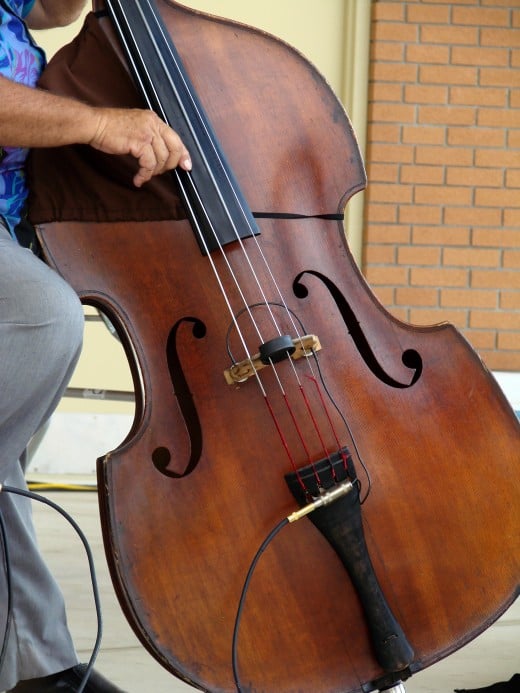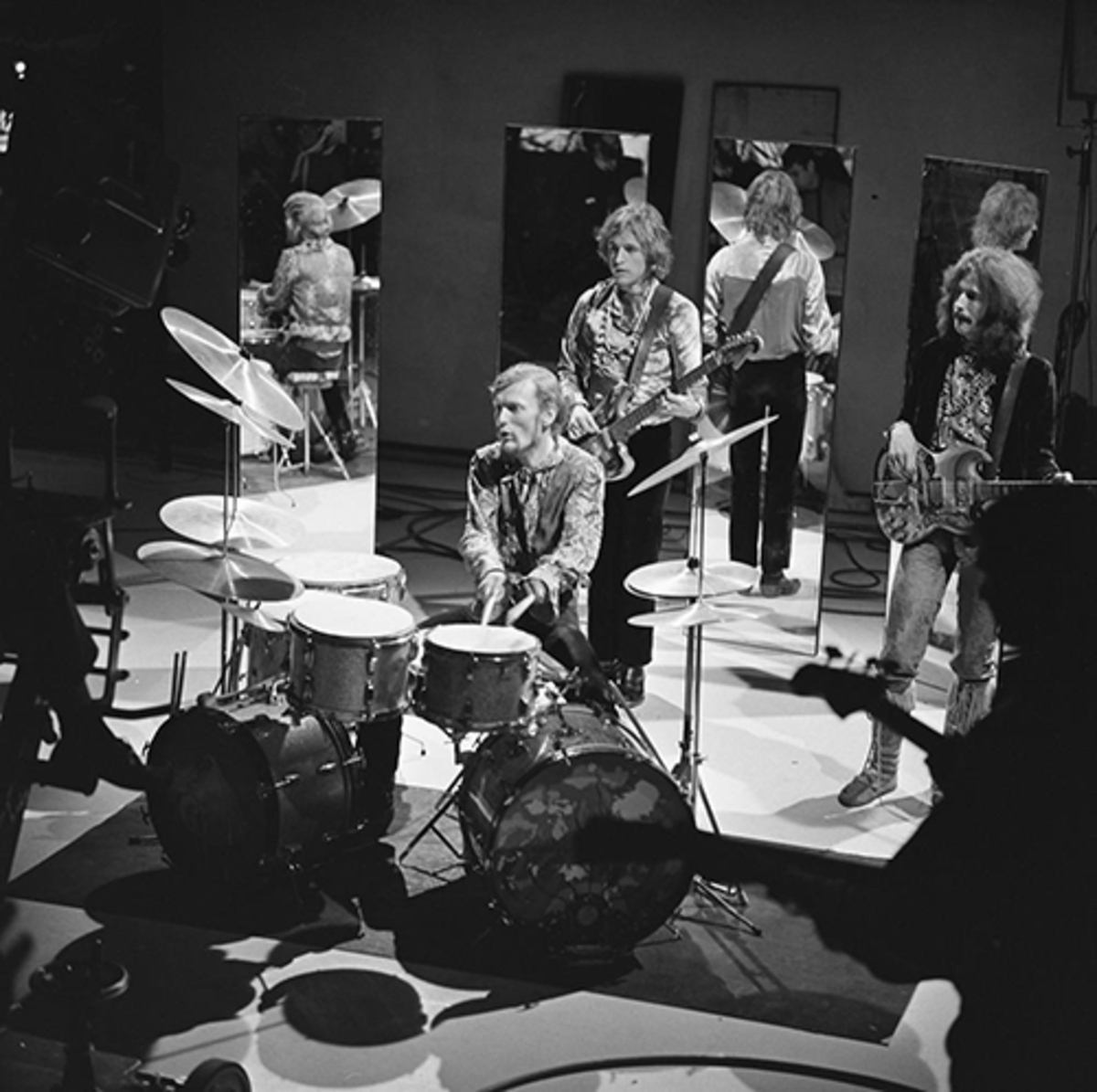The History of Bluegrass Music
bluegrass, mountain music, and old time music
I grew up in a musical home. My dad had a great voice and played the guitar, and even though my mom couldn’t sing a lick or play any musical instruments, she loved listening to music. The strange thing was that my parents’ tastes were worlds apart when it came to music. Mom was always listening to classical music and opera, while Dad enjoyed bluegrass. Of course, as a kid, I was caught in the middle of the “war of the stereo.” On any given day, I might be exposed to Tchaikovsky, Beethoven, Mozart, the Carter Family, Roy Acuff, and Bill Monroe and the Bluegrass Boys. It was an unusual musical existence, but looking back, I think I actually benefited from experiencing both ends of the spectrum.

Daddy was a huge fan of the Carter Family. I can still recall many of their songs, word for word. It’s not that I was paying attention on purpose – I hated the “wangy twangy” music and the mournful voices. I memorized the lyrics through osmosis because I was so often subjected to them. I liked Mom’s music a heck of a lot more, and when I started college at the age of seventeen, I found that my knowledge of classical music proved a big help in my music appreciation classes. As I grew older, however, I began to gravitate to bluegrass music more and more. I didn’t abandon my love for classical music or for other types of music. I enjoy a wide range of musical genres, including classical, show tunes, jazz, country, rock, pop, heavy metal, folk, Celtic, and bluegrass. There are even a couple of rap songs that I like.
My interest in bluegrass began in earnest years ago on a trip to the Appalachians in South Carolina. I befriended a family of bluegrass musicians there, and they performed a couple of impromptu concerts on the front porch of their farmhouse. After that, I was hooked. I wanted to learn more about the history of bluegrass, so I began to research.

Early history of bluegrass
Although Bluegrass is considered a form of American music, its first seeds came from the hills of Scotland and the green fields of England and Ireland. When the people of these regions began immigrating to America, they brought their customs and traditions with them, of course, including their music. Many of these folks wound up in the Appalachian Mountains, especially in the southern half of the range, including the Blue Ridge Mountains. If you listen closely to Celtic music and bluegrass music, you can’t help but notice the similarities. The immigrants’ instruments largely included the guitar, which had been used in Europe for several hundred years; the mandolin, which came to England, Ireland, and Scotland via Italy; the upright bass, a fifteenth century descendant; and the fiddle, which is a type of violin. The Dobro and the banjo were added later. Banjoes were introduced by African Americans, and the Dobro, a resonator guitar, was developed in 1928 by the Dopyera Brothers.
Basically, the earliest bluegrass music was a combination of old folk songs and mountain music. The traditional folk music themes and lyrics were often re-worked and set to new tunes. Of course, at the time, the term “bluegrass” hadn’t yet been invented, so the music was usually called “old-time music,” “hillbilly music,” or “mountain music.”
My favorite bluegrass song:
Another of my bluegrass favorites:
The Carter Family
My dad passed away in 2001, but if I were to write this without giving a nod to his beloved Carter Family, I’m sure he’d come back to haunt me. While the Carter Family wasn’t specifically a bluegrass group, their influence on bluegrass and country music can’t be ignored. Much of their music is considered to be folk music, but it had definite overtones of what would later be called “bluegrass.” The original group was made up of A.P. Carter, his wife Sara, and his sister-in-law, Maybelle Carter.
Hailing from the mountainous area of southwestern Virginia, the Carter Family is often thought of us the first stars of country music. They made their first recording in 1927, a 78 record that included “Poor Orphan Child” and “Wandering Boy.” Some of their most popular hits include “Wildwood Flower,” “Can the Circle be Unbroken,” “Wabash Cannonball,” and “Keep on the Sunny Side.”
As I was listening to some of these old tunes the other night on Youtube, how I wished my father had been there to enjoy them with me. Unfortunately, I didn’t have access to internet music before his death. My brother has all Dad’s old records now, but I can relive some of my musical childhood memories through my computer.
"Wildwood Flower," by the original Carter Family:
Bill Monroe
Bill Monroe is known as “the father of bluegrass music.” Born in Kentucky in 1911, Monroe grew up in a musical family that often got together and played and sang. Since other members of the family already played the guitar and fiddle, Bill was taught to play the mandolin. Such “family bands” were fairly common in the Appalachians. Many of these people were largely cut off from the rest of the U.S. because of their isolation – both geographical and cultural. Music provided them with a form of entertainment and a way to express their emotions and tell their story.
Monroe’s family band broke up with the death of his mother, when Bill was only ten years old. He lived with several different relatives before finding a home with his uncle, Pen Vandiver. Vandiver was a fiddler and often played at dances, and Bill accompanied him on his mandolin. Monroe’s substitute father exposed him to many old-time songs and served as the inspiration for one of Monroe’s most famous songs, “Uncle Pen.”
When Bill turned eighteen, he and his brothers, Charlie and Birch, moved to Indiana to work at an oil refinery. They had brought along their music, and they enlisted a friend, Larry Moore, and started a band. They called themselves the “Monroe Brothers,” and soon found gigs. After the other two band members went their separate ways, Bill and Charlie performed together as a duet. Beginning in 1934, they began performing live on radio stations that broadcasted to several states. In 1936, they landed a recording contract with RCA Victor.
By 1938, Bill and his brother broke up, and Bill formed another group in Arkansas, “The Kentuckians.” This group was short-lived, and Monroe soon moved to Georgia. In Atlanta, he formed a band that would ultimately leave an indelible mark on the music industry – the Blue Grass Boys. Eventually, the word “bluegrass” would come to define this specific type of old-time mountain music.
The original Blue Grass Boys landed a regular spot on the Grand Ole Opry, beginning in 1939. Until 1945, Monroe’s musical group consisted of a guitar, a bass, and a fiddle, along with Monroe’s playing the mandolin. He was still experimenting with a lot of different songs and sounds. That year, a new band member added a new instrument and another dimension – Earl Scruggs and his banjo joined the group. At this point, the Blue Grass Boys consisted of Monroe, Earl Scruggs, Lester Flatt, Howard Watts, and Chubby Wise. Their musical talent was so impressive that the group is often referred to as “the original bluegrass band,” and by the 1950s, just about everyone was using the term “bluegrass” for this type of music.
Bill Monroe - "Uncle Pen"
Bill Monroe and the Blue Grass Boys - "Blue Moon of Kentucky"
Bill Monroe and Earl Scruggs:
Lester Flatt and Earl Scruggs - "Foggy Mountain Breakdown"
Today's Bluegrass
Sometiems called "New Grass," bluegrass music is still alive and kicking. Some of the old tunes are performed by new groups, and new songs are written, also. Many popular country artists often have a bluegrass song or two in their repertoire, and even some rock bands occasionally turn to bluegrass. The interest in the genre was revitalized and broadened with the 2000 movie, O Brother, Where Art Thou?
Bluegrass fans love hearing their favorite old time music performed live, and there are bluegrass music festivals all over the United States. These are often huge events, and some last for several days. With multi-day bluegrass festivals, attendees often bring their campers so that they can take full advantage of all the festivities.
One of the most popular bluegrass music festivals in the nation is the Telluride Bluegrass Festival. Held in Colorado each year, the Telluride Bluegrass Festival usually sells out months in advance. In addition to bluegrass music, guests can enjoy other types of music, as well. The 2012 Telluride Bluegrass Festival will take place June 21-24. In addition to practically nonstop musical performances, there are also song-writing contests, band contests, jam sessions, and workshops.



